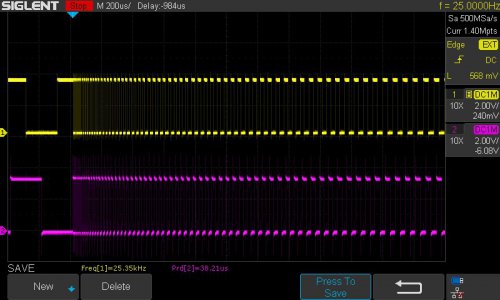True, but coding a simulator is risky in the sense that you write code on your main platform that runs against the simulator. The risk is the simulator really isn't like reality. I've seen that a lot. That said maybe I can cobble together some cheapo arduino to generate a signal train.
Clearly some testing with the real encoder will be required, but a lot of software development and testing will be more convenient with a signal source. An encoder is hardly a difficult device to simulate. He showed it in a video and mentioned it, but anything you have laying around can do the job, you don't need his design for that.
Last edited:


